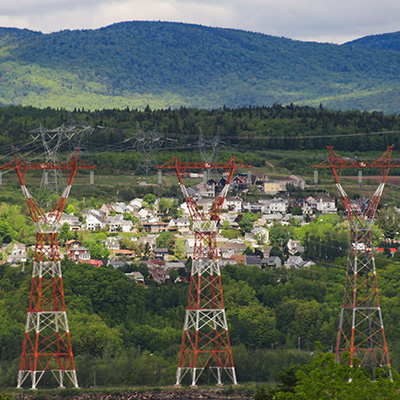Published On: May 30, 2018
The problems arise from the possibility of simultaneous charging of a large number of vehicles, which can overload the power grid and from the effects of non-sinusoidal current consumption of the battery charging systems.
|
A report published by the California Energy Commission presents a study about the impact of residential EVs batteries charging systems. It shows that with the use of EV, the THD of the current presents a variation from 3% (at the beginning of charging, with a unitary power factor) to 28.11% (at the end of the charging, with a power factor equal to 0.96). Hence, it is clear that the simultaneous use of a great number of EVs batteries charging systems connected to the electrical distribution grid can cause a significant degradation of the electrical power quality. Moreover, transformers, which connect every home and business to the grid, are the most vulnerable and affected elements of the system. Most residential transformers are designed to serve between 10-50kVA of load, while a single plug-in vehicle (PEV) with a 240V charging system consumes about 7kVA. If multiple electric car owners use the same distribution transformer (such situation is referred to as clustering), they may cause damage or outages from overloading the equipment or by shortening their normal cool-down period. A single overloaded transformer can, in turn, degrade power quality in other residential feeders. |
“EV interface device will affect network loading, voltage profile, phase imbalance and power quality”
To make things worse, transformers do not contain any telemetry systems built in to send information on their health to utilities. In many cases, power companies do not have any system in place informing when the overload occurs.
How serious is the problem? Some studies suggest that higher penetration rate of electric vehicles increase transformers’ loss-of-life factor, even by up to 10,000 times. And this comes with a hefty price tag!
Moreover, poor PQ will raise electrical safety concerns. The SMPS based direct power supply does not provide physical isolation to the users hence vulnerable to accidental contact with live elements causing safety breach. EV charging stations shall use galvanic separation using isolating transformer for ensuring users’ safety. Also, considering the risk involved to users, it is necessary that the components used in charging station should be made of fire retardant halogen free material and conform to available standards.
Thus, the impact is expected to be significant on PQ and power system elements due to the high energy capacity and mass deployment of EVs in the future. EV interface devices may be designed to minimize or even eliminate the effects of EVs on the network fault level and protection system. However, their effects on the network loading, voltage profile, phase imbalance, power quality & safety could be significant and need to be appropriately assessed. Therefore, the impact caused by the spread of EVs will be different and the ones that cannot be neglected.
CONCLUSION
Economic and environmental reasons are making EVs a reality. However, the spread use of EVs will bring consequences to the power grid, mainly in terms of peak load management and power quality. Large deployment of EVs will lead to potential PQ problems for existing power networks, harmonics being prominent. Thus, EVs may have adverse effect on the distribution network if the penetration is not carefully and systematically planned due to its nonlinear nature. It is therefore a need of the hour to study and analyse the effects of EV on power quality before EV hits the grid and hurts it.
REFERENCES
- Impact of electric vehicle fast charging on power system voltage stability– C.H.Dharmakeerthi and N.Mithulananthan
- Harmonic Impact of Plug-In Hybrid Electric Vehicle on Electric Distribution System – A. Aljanad and Azah Mohamed
- Batteries Charging Systems for Electric and Plug-In Hybrid Electric Vehicles – Vítor Monteiro, Henrique Gonçalves
- The Impact Of Growing Electric Vehicle Adoption On Electric Utility Grids by Eric Schmidt
- Impact of Electric Vehicles on Power Distribution Networks by Putrus G. A., Suwanapingkarl, P. Johnston, D. Bentley and E. C. Narayana M., 26 May 2014.
- The Indian Express – 24 May, 2018









